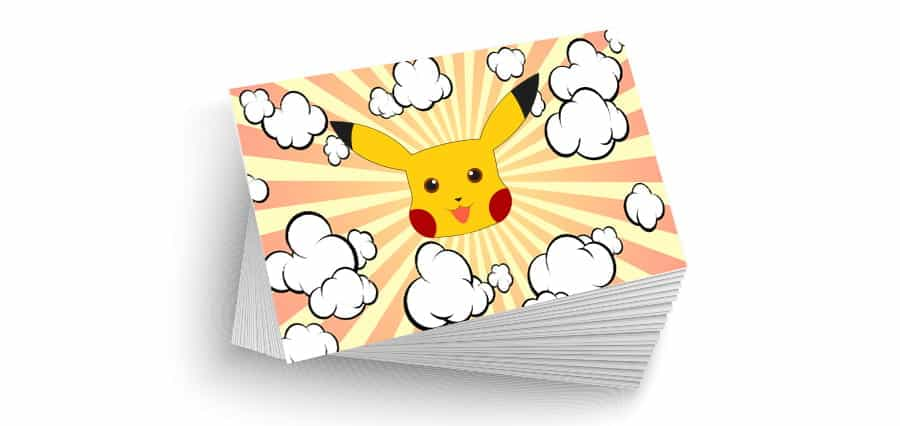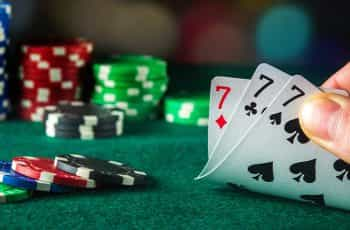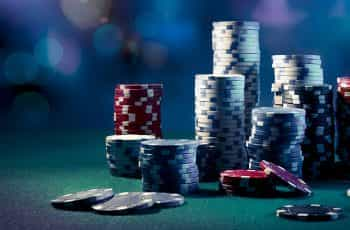
Pokemon trading cards started off as just a game some time around the nineties, but as is the case with a lot of things today, the cards are now collectors’ items selling for up to hundreds of thousands of dollars. What started off as a fun game for many during their childhoods, is now a whole market of its own where one can earn truly monstrous profits that are far from pocket sized.
Youtubers opening Pokemon cards
In fact, the market has evolved to the extent that it is now common to see major YouTubers opening Pokemon card packs in search of rare Pokemon, and livestreaming the entire process and their reactions. Streamers purchase hundreds of Pokemon packs and open them in one go, all with the hope of picking up a rare Charizard – the crowning jewel of any collection.
If you lived and breathed Pokemon as many children did, you’re probably wondering about whether you can enter this unique market and convert your childhood interest into a lucrative, profitable hobby. We’re here to bring you up to speed on exactly how this market works and how it has been lucrative to others, and possibly to you.
For what it’s worth, it’s certainly an unconventional way to gamble compared to classic cards games such as playing at blackjack casinos.
Understanding Rarity
Before learning how to flip them and make a huge profit, it’s important to understand the cards you’re attempting to sell. Just like how any other form of collecting requires some knowledge of how to appreciate a collectible, the same is the case with Pokemon cards. It is hugely important to know how to decipher whether you’ve got your hands on a potential payday, or just a fun little card to play with.
The best part about trading Pokemon cards is that the rarity of each card is mentioned on the card itself. The not-so-great part is that understanding the rarity of a card is rarely that simple, though understanding the official markings on each card is a good place to start.
Types of rarity
Pokemon cards are labelled common, uncommon, rare, and ‘promo’ using symbols – a dot for a common card, a diamond for an uncommon card, a star for a rare card, and a slightly different star that says ‘promo’ for promo cards. While the other types of rarity are rather self explanatory, promo cards are those released only for a limited period promotion – the most valuable of them all being the legendary Pikachu illustrator card, which is a tribute to the genius who brought Pikachu into the world.
Unfortunately for aspiring collectors, the symbols are where it ceases to be simple. A rare symbol is used for all levels of rarity, which means that a moderately rare card and one that would sell for thousands of dollars would share the same ‘rare’ symbol. This is where the challenges of being a Pokemon TCG (Trading Card Game) collector truly begin, but the first step to overcoming them is to understand the other forms of sub-rarities that the market has defined for each type of Pokemon card.
- Rare holographic cards used to be the rarest card one could pick from a Pokemon TCG pack, especially in older sets like the Base Set or Jungle Set. That isn’t the case anymore, with these cards actually being quite common – even though they still bear the ‘rare’ symbol.
- Reverse holographic cards are a new form of rare cards that have become a part of the modern Pokemon TCG. They are identified by how the image in the card isn’t holographic, while the elements around it are. They’re practically guaranteed in most modern Pokemon TCG sets, such as Chilling Reign, Evolving Skies, Fusion Strike, and Vivid Voltage. A common feature in most booster packs today, is a guaranteed reverse holo.
- A Rare Ultra card is the blanket rarity assigned to cards that are known as “full arts” – wherein the art takes up the entirety of the card, beyond the confines of a border.
The most important thing to know as an aspiring collector, is the terminology that the Pokemon TCG community uses to describe these cards. There are many cards that the community would describe as a Rare Ultra – starting from standard full art cards, to secret rares which are cards outside the numbered list, to rainbow rares which have a rainbow hue effect, to gold secret rares which have a ‘gold effect’. All Rare Ultra cards are Full Art cards, which is the base criteria for the community.
Gotta Catch Em All
If you’re wondering just how worthwhile it is to have such an academic understanding of Pokemon cards, some of the most expensive Pokemon cards and deals will show you just why.
A pre-release Raichu card, for instance, sold for close to $11,000 in 2009. The reason behind this is that the existence of the card itself is shrouded in mystique, considering that only 100 of these cards with ‘pre-release’ accidentally printed on them may exist.
A 2002 Pokemon World Championships trainer card sold for $31,200 in 2021, and is highly prized because these limited release cards were handed out to winners of Pokemon battles back in the day.
One of the rarest Pokemon cards of all time is the 2006 World Championships Promo Trainer card, with only three cards believed to be in existence – which were all handed out to the winners of the world championship. This card sold for $110,000 in 2021.
There are two cards that are the Holy Grails of a Pokemon TCG collection – a first edition Charizard, and the Pikachu Illustrator card. The former sold for $425,000 in 2022, while the latter sold for a whooping $5.275 million in 2021, which makes it the most expensive Pokemon card.
While most traders won’t find themselves in such deals for the most expensive Pokemon cards unless they’re significantly bankrolled, the game is still accessible and fun for players looking to get some action in the mid level stakes. While the card makers themselves don’t print the odds of pulling an Ultra Rare card on the pack, each set is unique and guarantees a rare card to most collectors – just that the ‘rare’ symbol on a Pokemon card doesn’t even tell the beginning of the story. It’s now time to go forth and catch ’em all, and pick up new learnings along the way – but most importantly, have fun!
Frequently Asked Questions
We hope we have given you an understanding about trading Pokemon TCG cards, and some of the most expensive Pokemon cards. Here are answers to some questions you may still have. For more information related to card games, check out our guides section.
What are your odds of finding a rare card in an unopened packet?
This isn’t a straightforward answer, since the makers don’t specify the exact payouts on the pack, and also since there are so many levels of rarity. Most packs guarantee at least one rare card, but it’s often something like a Reverse Holographic Rare that is actually quite common.
What is the most expensive Pokemon card ever sold?
The most expensive Pokemon card ever sold is the Pikachu Illustrator card which went for north of $5 million. The second most expensive card ever sold is the original edition Charizard for $425,000.
Who is the most famous Pokemon card unboxer?
Jake Paul is arguably the most famous Pokemon card opener, considering the immense popularity of his channel. He is the brother of Logan Paul, a Youtuber turned MMA fighter who has been the subject of many sports bets thanks to his past as an internet influencer.



